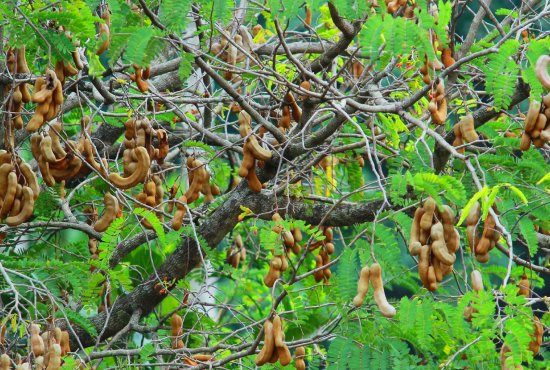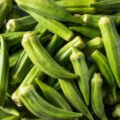Introduction Of Tamarind
In India, the taste of summer is sour, in particular the fruity sweet-sourness of tamarind. This fruit tastes best when it’s soaked in water, and then squeezed to extract the tangy juice that will flavor your food all summer long. If you have never tried before, start with this simple recipe and you’ll be looking forward to hot days just so you can make more!
Where Does It Grows
The little brown seed pods of tamarind grow in a tropical climate, so they can only be found in warmer countries, especially India. Tamarind is native to Africa and Asia and it’s cultivated commercially in countries such as Kenya, Zimbabwe, and Nigeria. In addition to India though ,it’s also grown and enjoyed around Thailand, Indonesia, Malaysia, and Bangladesh. The fruit itself may be hard to come by (unless you live some wherewith similar conditions), but if you have access to an Indian or Asian market look for what looks like dried cranberries with a brown seed inside; if so then you’ve got some tamarind on your hands! If not though you might need to pick up some dehydrated pulp online.
Tamarind trees take many years to bear fruit and cannot withstand frost. As a result,tree is grown commercially throughout tropical regions of Asia, Africa, and South America. seeds should be planted in late spring or early summer once temperatures are consistently warm. However, trees can also be started indoors 4-6 weeks before the last frost. Before planting makes sure your tree is acclimated to outdoor temperatures by allowing it to spend 24 hours outside each day for 2-3 days before transplanting.
How do you consume it?
Tamarind is consumed in several ways and it is difficult to find a cuisine where tamarind does not feature, if in some form or another. In India, it’s found almost exclusively as an ingredient used in cookery, especially with meat and fish preparations. To release its flavor tamarind can be soaked in water for a few minutes before using (or even boiled) although traditionally nothing but its fruit is used. The cooked fruit can then be added to curries or stews, eaten on rice or loaves of bread, or often just scooped up with your fingers!

How does it taste?
One of the tamarind’s most intriguing characteristics is its flavor. Considered an acquired taste, tamarind is sour with a hint of sweetness. Its distinctive flavor has been compared to that of tomatoes and dates. And yet it also has a flavor all its own; one you might be hard-pressed to describe but once you know when you taste it.
Tamarind is not as tart as lemons or limes, but more so than oranges or grapefruits. It combines interestingly with other flavors, whether they are salty (black pepper) or sweet (honey). To best experience tamarind’s unique fruity-tartness, simply take a bite and enjoy!
Tamarind - Versatile Uses
The fruit is used for various purposes. Tamarind or imli is a versatile fruit used in many parts of India. The pulp or paste from ripe tamarind pods is eaten as a relish with rice or lentils, while unripe tamarind pods are used in pickles and chutneys and to prepare a cooling drink during summer months.
They can also be preserved by drying them in hot sand after which they can be stored for longer periods. Seeds are roasted and used as snacks often paired with peanuts, while tender pods and flowers are also consumed, especially when they are served raw with tamarind pulp.

Recipe suggestions
While tamarind is commonly available at local Indian markets, many other dishes are great to make using tamarind. Here are a few suggestions for ways to use up your bounty: Make a sweet-sour sauce to pour over roasted vegetables. Tamarind lends itself well to more savory sauces as well, such as a marinade for meats or even a tamarind barbecue sauce. It also can be mixed with honey and soy sauce (instead of sugar) for Asian dipping sauces. What’s your favorite way to use tamarind?
Dried vs Fresh
On its own, dried tamarind can be a rather lackluster ingredient. But not if you soak it for a few minutes in water and blend it with sugar to make a refreshing drink. That’s what you get with authentic Indian dhoodh pedha or dried fruit pudding. Fresh tamarind comes in pod form and is sweet-tart enough on its own to serve as a drink or mixed with other ingredients for flavor and texture. The taste of summer? It doesn’t get any better than fresh tamarind—the way nature intended!



I don’t think the title of your article matches the content lol. Just kidding, mainly because I had some doubts after reading the article. https://www.binance.info/pl/join?ref=IJFGOAID